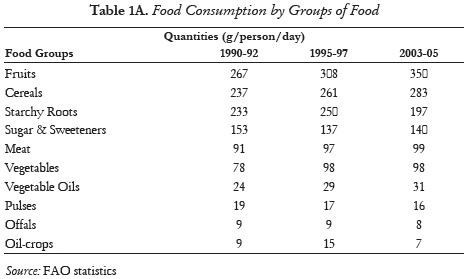

In particular Goal 2: Zero Hunger sets globally agreed targets to end hunger, achieve food security and improved nutrition, and promote sustainable agriculture by 2030. The main global policy to reduce hunger and poverty is in the Sustainable Development Goals. Multiple different international agreements and mechanisms have been developed to address food security.

The 1996 World Summit on Food Security declared that "food should not be used as an instrument for political and economic pressure". These six dimensions of food security are reinforced in conceptual and legal understandings of the right to food. The concept of food security has evolved to recognize the centrality of agency and sustainability, along with the four other dimensions of availability, access, utilization, and stability. The United Nations (UN) recognized the Right to Food in the Declaration of Human Rights in 1948, and has since said that it is vital for the enjoyment of all other rights.

The Food and Agriculture Organization of the United Nations, or FAO, identified the four pillars of food security as availability, access, utilization, and stability. Food security incorporates a measure of resilience to future disruption or unavailability of critical food supply due to various risk factors including droughts, shipping disruptions, fuel shortages, economic instability, and wars. Food insecurity, on the other hand, is defined by the United States Department of Agriculture (USDA) as a situation of "limited or uncertain availability of nutritionally adequate and safe foods or limited or uncertain ability to acquire acceptable foods in socially acceptable ways". Individuals who are food secure do not live in hunger or fear of starvation. Similarly, household food security is considered to exist when all members, at all times, have access to enough food for an active, healthy life. The first World Food Summit, held in 1996, stated that food security "exists when all people, at all times, have physical and economic access to sufficient, safe and nutritious food to meet their dietary needs and food preferences for an active and healthy life." Later definitions added demand and access issues to the definition. At the 1974 World Food Conference, the term "food security" was defined with an emphasis on supply food security is defined as the "availability at all times of adequate, nourishing, diverse, balanced and moderate world food supplies of basic foodstuffs to sustain a steady expansion of food consumption and to offset fluctuations in production and prices". There is evidence of food security being a concern many thousands of years ago, with central authorities in ancient China and ancient Egypt being known to release food from storage in times of famine. The availability of food irrespective of class, gender or region is another element of food security.

According to the United Nations Committee on World Food Security, food security is defined as meaning that all people, at all times, have physical, social, and economic access to sufficient, safe, and nutritious food that meets their food preferences and dietary needs for an active and healthy life. A farmer holding up onions he has grown on his farm near Gilgil, Kenyaįood security speaks to the availability of food in a country (or geography) and the ability of individuals within that country (geography) to access, afford, and source adequate foodstuffs.


 0 kommentar(er)
0 kommentar(er)
